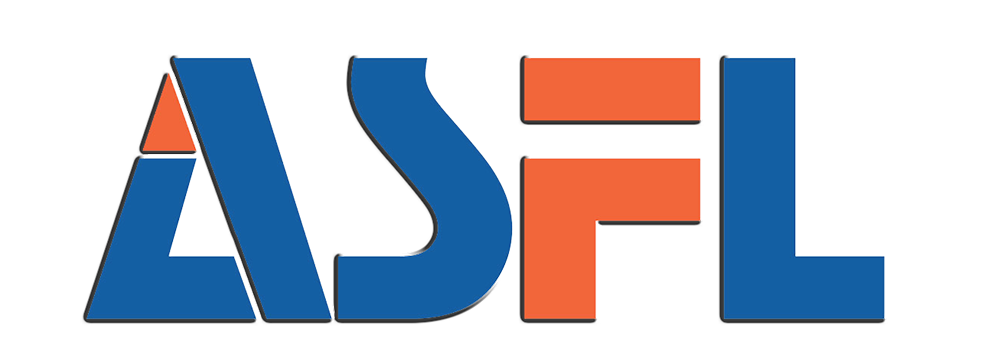Core Components of Modern Water Bottle Filling Machines
Filling Mechanisms for Liquid Bottle Processing
Liquid bottle filling machines are equipped with diverse filling mechanisms tailored to different liquid viscosities and container shapes. Understanding these systems provides insight into their functionality and efficiency. Here are the main types:
- Gravity Filling: This simple method uses the liquid's natural weight to fill containers, ideal for free-flowing liquids like water and juices.
- Vacuum Filling: Suitable for filling less viscous liquids in glass bottles where vacuum helps draw the liquid into the bottle efficiently.
- Pressure Filling: Used for carbonated beverages to prevent foaming and spillage by counteracting internal bottle pressure.
Selecting the appropriate filling technology is important when you want to reduce waste and achieve accurate fills. Magnetic flow meters (MFM) in newer equipment provide the best accuracy of any flow measurement by directly measuring the volume of liquid flow rather than its indirect correlates. Significant breakthroughs have been achieved in autofill systems, making it possible with high-speed production lines to fine-tune the operation for different bottle shapes and sizes. New Technology - The right technology will not only improve production efficiency but also minimize waste product for a cost effective approach to the business.
Integrated Capping Systems in Filling Lines
Capping systems play a pivotal role in ensuring product integrity and safety post-filling, safeguarding beverages during storage and transportation. These systems can be categorized as:
- Manual Capping: Suitable for small-scale operations; this system is cost-effective but requires significant human intervention.
- Semi-Automatic Capping: Offers a balance between manual input and mechanized precision, ideal for medium-sized businesses.
- Fully Automatic Capping: Provides rapid and consistent capping, reducing human error and ensuring high-speed production efficiency.
New developments have begun to allow capping with agile robotics that has greatly increased the speed and repeatability. These robots easily integrate into existing filling lines to easily handle changing production volumes and bottle types, and increase productivity. And advanced automatic systems enable real-time monitoring and adjustments, further improving the capping process for diverse applicationsâdon't miss the opportunity to explore this capability across all products including beverages and pharma. This technological leap forward has set a new standard for operational excellence in the industry, reinforcing the value of investing in state-of-the-art capping systems to gain a competitive advantage.
Conveyor and Bottle Handling Solutions
Conveyors and bottle handling systems are integral to maintaining a smooth and efficient workflow in bottling plants. Different conveyor designs cater to specific needs:
- Modular Conveyors: Provide customization and easy adaptability to varying bottling layouts and production scales.
- Belt-Driven Conveyors: Ideal for high-speed operations, ensuring stable and fast bottle transport.
- Roller Conveyors: Offer reliable transport for heavier bottles and products, especially in industrial settings.
Successful bottling operations also benefit from efficient handling of bottles by reducing breakage and increasing the quality of the product. Features like soft grip robotics provide careful bottle handling, minimizing risk in transportation and preserving contents. On the other hand, efficient conveyor systems in bottling plants can be installed to fit in flow of work for better operational efficiency. When combined, all of these innovations add up to reduce downtime, increase throughput and facilitate a seamless production operation right from the outset. I enjoy not just the new pace of challenge but also the greater safety and lower cost of running through such new solutions.
Types of Bottling Equipment for Different Production Scales
Manual vs Semi-Automatic Liquid Filling Machines
When choosing bottling machinery, it’s important to take your production size into account. Manual filling machines are ideal for small scale production or as an entry level system to introduce filliing equipment to your operation. These kits are perfect for start-up businesses that have low volume productions and, limited budgets. By comparison, semi-automatic machines scale more easily and have much higher delivery rates. These are referred to as equipment-level automation, and allow a moderate increase in production rates without going to the full expense of fully automated lines. The determination to use manual production and semi-automatic machines depends upon labor costs and operational flexibility required. Semi-automatic options are a good choice for organizations that anticipate growth or have frequent product shifts, as they allow businesses to respond to increased production demands without breaking the bank.
Fully Automated Liquid Filling Lines
Fully automatic liquid filling lines are undoubtedly the most efficient and reliable solution for production. Such systems are intended to accurately mate with other aspects of a bottling line, and avoiding human interaction, and therefore potential mistakes. The cost of these types of systems is higher up front than manual and semi-automated systems, in the long run there are savings and efficiencies to be realized. When companies contemplate automation, the return on investment usually is measured by the lower cost of labor or faster time-to-market. There are many examples in industry where product ion plants use 100% automated lines to achieve higher production rates and consistent quality levels, so the important of these technologies is emphasized in competitive markets. These solutions indeed boost productivity and overall potential of the company.
High-Capacity Rotary Filling Systems
These High Speed Rotary Filling Systems are designed for high volume production that require precise and repeatable filling operations. Rotary systems are designed mechanically to withstand high speeds and remain precise, which is highly critical to industries with high volume production requirements. These high speed machines offer speed and accuracy by implementation of cutting edge technology such as fill nozzles that are synchronized and control systems that are precision. When comparing rotary to linear systems, manufacturers must evaluate what they need in terms of output and space. Rotary systems are especially beneficial when a high degree of efficiency and the small footprint are of importance, which has made it a favorite in many large-scale applications. The fact that they are suitable for a wide variety of product viscosities and container types means they can be used in a variety of industries.
Advanced Features in High-Speed Filling Systems
Hygienic Design for Food-Grade Compliance
Hygienic design is essential in high-speed filling processes in order to meet the necessary safety and quality specifications. This means using appropriate materials and construction methods that comply with rules, such as FDA and EHEDG. For example, stainless steel is a popular material because it is non-reactive and easy to clean. In addition, clean-in-place (CIP) systems are important features they offer rapid and efficient sanitation, reducing downtime in a continuous operation. Systems like these don't need manual cleaning, which makes them easy to sterilize and keep your lab running efficiently.
Automation and Precision Volume Control
Automation greatly improves accuracy in the control of volume, which is maintained at the same high level of quality as automation of other types of liquid filling systems. With such technologies as servo-actuated filling nozzles, measured dispensing is possible, resulting in less waste and a more consistely filled product. The automation serves to optimize production processes as well as to make a contribution to sustainability by conserving resources. When manufacturer own accurate volume control system, Manufactures are able to maintain quality clients are use to while reducing their cost of operations resulting in an efficient  liquid filling line.
Smart Sensors for Quality Assurance
Intelligent sensors are essential for product integrity control, they follow up parameters during filling. Through embracing IoT solutions, manufacturers can collect real-time data analysis and manage product quality control through real-time tasks processing. The result is lower error and less waste, shining examples of the profitable possibilities presented through the use of smart sensor technology. These sensors deliver important information to the user, guaranteeing that every bottle filled meets quality requirements. As a result, not only is productivity increased, but there is a strong quality control mechanism in place to protect the trust and satisfaction of the consumer.
Benefits of Automated Filling and Capping Solutions
Increased Production Efficiency in Bottling Plants
Automatic filling and capping machine effectively improve the production capacity of bottling plants. Receive from various industries, the output has been improved all over 30% on the average by using the systems. This improvement can be seen in case studies such as CR Beverage in China, which has incorporated aseptic high-speed lines from Sidel that can reach up to 54,000 bottles per hour (bph) for some formats. Automation also makes it possible to reallocate labor, freeing employees from low-value tasks like manual labor so they can focus on higher-value work in quality control and systems management. This strategic reassignment improves productivity of human resources and efficiency due to synthesis of ER patient care and overall operating room schedule.
Cost Reduction Through Precision Engineering
Automated fillers with precision engineering are a key advantage that that provides significant cost savings. In addition to chemical savings by eliminating product loss, maximum product and material utilization are achieved with these systems. Industry research estimates cost savings of as much as 20% from decreased waste and increased efficiency. Precision automation depends on upfront investment, long-term the outlay is recouped out of greater efficiency and accuracy. With the ability to finely control the volume, and enhancements such as servo-actuated filling nozzles, companies achieve reproducible quality with little waste, resulting in high cost savings.
Contamination Prevention in Liquid Processing
Maintaining aseptic liquid handling in processing is critical to prevent pathogen contamination, control microbes and guarantee product safety and quality. New technology, like UV sterilization and automatic cleaning, are essential to meeting hygiene requirements and preventing cross infection. Implementing these types of procedures isn’t just in compliance with health and safety guidelines, but also with industry requirements on keeping your customers as safe as possible. For instance, static preform treatment, which is dry in the case of Sidelâs Aseptic Combi Predis system, is inherently sterile, which reduces contamination potential. This dedication to the prevention of contamination is reinforced by regulations and by the numbers (82) that indicate the value of rigorous hygiene management within a liquid processing situation.
How to Choose the Right Liquid Filling Machine Manufacturer
Evaluating Production Capacity Requirements
To select an appropriate liquid filling machine manufacturer, the first thing you need to do is assess your production capacity needs. You and your management team have to know what peak and average demands are to deliver enough filling and capping machine capacity with no restrictions. In terms of factor, scalability and flexibility are important, especially as your business develops in playing instruments. Choose a top liquid filling equipment supplier that provides customizable systems so that you can always make enhancements to accommodate your flourishing business – this keeps your liquid filling line productive year after year. Industry reports can also be an invaluable resource in setting expectations for production goals in relation to competitors- what similar businesses are producing. By comparing these key indicators, you are able to make an educated decision, which acknowledges your current demands through to future growth.
Customization Options for Bottle Formats
Custom modification is important when choosing a filling machinery manufacturer, especially for various bottle shapes. So what you bottle and cap is what you drink, thanks to the 6 in 1 you won’t have waste and your filling and capping processes will be hic.cup free. Some manufacturers have brought systems to market featuring adjustable guides and adaptable nozzle systems to improve bottle handing capabilities. Criteria for assessing this when selecting a manufacturer should include the ability to deliver these customisations to deliver bespoke solutions with the flexibility and accuracy that your application requires. Complete configuration options allow for easy integration into your existing workflow to keep you productive and to allow for seamless integration between the scanning application and your current software.
After-Sales Support and Maintenance Services
The after-sales support and maintenance is just as important as the initial purchase of your liquid filling machine in order to make sure it lasts. Good support services, like extensive warranties and responsive customer service, can be the difference between your gear working and not working. Learn about what kind of support services the manufacturer offers and how quickly they can respond to service calls. Business case studies showed companies that provide great customer service are less often interrupted with downtime for their operations. Quality manufacturers, who have put the customer first, will generally have helped design machines that last and work, helping you find the perfect partner to keep your filling and capping machinery up-and-running.
For more information on selecting the right manufacturer and exploring the array of liquid filling machines available, refer to trusted industry sources and experts to guide you through the decision-making process. These elements are crucial in ensuring you procure the most suitable equipment for your unique production line needs.





